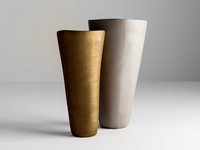220-240 V
xx0 mA
220-240 V
CRI
≥ 90
UGR
≤ 19
1 ADDR.
Symbols
cd/m2
≤ 3000
cd/m2
≤ 1500
2-SDCM
RG 0
IEC 62471
360°
35°
IP 20
IP 40
XAL 22
990
DE Eine externe Überprüfung des Produkts und aller
geltenden europäischen Anforderungen. Ein CB-Zertifikat
erleichtert den Erwerb anderer nationaler Prüfzeichen.
DE Mit der CE-Kennzeichnung erklärt der Hersteller, dass
die Leuchte allen geltenden europäischen Anforderungen
entspricht.
DE Leuchten, die das ENEC-Zertifikat führen dürfen,
sind nach den strengen ENEC-Richtlinien geprüft. Die
Einhaltung wird durch jährliche Produkt- und Werksinspek-
tionen gewährleistet.
DE Schutzklassen geben Auskunft darüber, inwieweit eine
Leuchte gegen die Risiken eines Stromschlags durch
Berührung geschützt ist.
SK I: Schutzerdung
SK II: verstärkte oder zweifache Schutzisolierung
SK III: Schutzkleinspannung
DE Gibt die Anzahl der DALI-Adressen einer
Leuchte an.
DE Der Farbwiedergabeindex größer 90 steht für eine sehr
gute Farbwiedergabe, die in Museen und im hochwertigen
Retail-Bereich Anwendung findet.
DE Entblendete Arbeitsplatzleuchte gemäß DIN EN 12464-1.
DE Schutzart für Einbauleuchten. Die obere Angabe
bezieht sich auf den eingebauten Gehäuseteil, die untere
auf den sichtbaren Teil der Leuchte.
DE Gibt die Dreh- und Schwenkbarkeit der Strahler an.
DE Hochwertige LED Sortierung mit minimaler Farbort-
abweichung. Der Mittelpunkt des Binning liegt im Zentrum
des ANSI C78.377-2015 Bin-
systems. Bei 2 SDCM Scale liegen die Farborte innerhalb
einer Range von < 70 K.
DE Bildschirmtaugliche Arbeitsplatzleuchte.
Die Leuchtdichte ist oberhalb des nach unten strahlend-
en Lichtkegels mit Öffnungswinkel ± 65°, ≤ 1500 cd / m2
(notwendig für schwarzen Bildschirm bei CAD Tätigkeiten)
oder ≤ 3000 cd / m2 für weißen Bildschirm bei Office Tätig-
keiten Tätigkeiten.
Symbole
DE Gemäß der internationalen Norm IEC 62471 stellt die
Leuchte keine fotobiologische Gefahr dar. Es kommt zu
keiner Schädigung des Auges, auch bei dauerhaftem
Blick in Richtung Lichtquelle (unbegrenzte Expositions-
dauer).
EN This includes an external review of the product and all
applicable European requirements. A CB (Certification
Body) test certificate facilitates the acquisition of other
national certification marks.
EN The CE marking indicates a declaration of the manu-
facturer that the luminaire complies with all applicable
European requirements.
EN Luminaires that are allowed to carry the ENEC
certificate are tested according to the strict ENEC
standards. Compliance is guaranteed by annual product
and factory inspections.
EN Protection classes provide information on how well a
luminaire is protected against the risks of a current surge
due to contact.
PC I: Protective earthing
PC II: Reinforced or double protective insulation
PC III: Safety extra-low voltage
EN Indicates the number of DALI addresses of
a luminaire.
EN A colour rendering index greater than 90 indicates very
good colour reproduction, which is applied in museums
and high-quality retail areas.
EN Glare-free workplace luminaire according to DIN EN
12464-1.
EN Degree of protection for recessed luminaires. The
upper specification refers to the built-in housing part; the
lower one refers to the visible part of the lamp.
EN Specifies the rotation and pivoting capability of the
spotlight.
EN High-quality LED sorting with minimal colour location
deviation. The centre of binning is located in the centre
of the ANSI C78.377-2015 binning system. With 2-SDCM
scale the chromaticity coordinates are within a range of <
70 K.
EN According to the international standard IEC 62471
the luminaire presents no photobiological hazard. No
damage is caused to the eyes even when continuous-
ly looking directly in the direction of the light source
(unrestricted duration of exposure).
EN Workplace luminaire suitable for VDUs.
The luminance is above the downward-radiating
light cone with an aperture angle of ± 65°,
≤ 1500 cd / m2 (necessary for black screen for
CAD activities) or ≤ 3000 cd / m2 for white
screen for office activities.
∞
back




